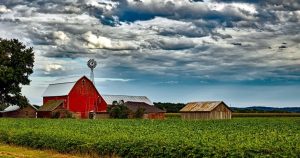Reflection- Hyperlinked Rural Communities
A passion of mine is connectivity. Whether it is through physical conversations, shared interests, or online interactions, it is easier than ever to stay connected with people you know and forge new connections across the world. However, this type of connectivity is not a reality for everyone. Globally, 67% of all people use the Internet- amounting to about 5.4 billion people! (Statista, 2024). That is a lot of connection! But what about the remaining 33% of people- where is their stable Internet access, and why is it hard to connect them to the Internet?
This thought process of mine began when I read the article from the Hyperlinked Communities module entitled “Libraries Are Bridging the Digital Divide” by Audra Williams. In this article, she highlights the problem during the pandemic that faced many communities, including rural communities, with having stable internet access to work, live, and connect during a time in which we could not, out of fear of COVID. She discussed how libraries are bridging the gaps of access, for example, by affixing routers and modems to the outsides of library buildings, and boosting the range so people can connect from far away, there is less risk of social distancing breaking, and more people can connect. This is a key point that comes up in this article: libraries are uniquely equipped to handle this “digital divide”: they have the space, resources, and will to help people become more digital in a time where being digital is all that matters.

I then remembered a bill passed by Congress in the US, called the Broadband Internet Connections for Rural America Act, which provided states with funding to set up and maintain cheap and fast Internet access for remote and rural communities, to help connect them to the world. In my remembrance, I realized why it was fresh in my mind: I had heard on the radio that the bill was running out of funding, and the latest Congress did not approve a spending package to renew the bill, meaning that federal support for this cheap and fast connection was leaving these communities high and dry. This is where libraries can come in. Libraries are the local answer to this problem that Congress cannot figure out. If libraries in these communities and close by can reach out and support this type of Internet access, by having computer stations, loanable routers and hotspots, and more, we can connect even more people, and fulfill the mission of libraries: create and foster the community.
References:
Audra Williams, C. M. (2022, November 29). Libraries are bridging the digital divide. Internet Society. https://www.internetsociety.org/blog/2021/03/libraries-are-bridging-the-digital-divide/
Ani Petrosyan, & 22, M. (2024, May 22). Internet and social media users in the world 2024. Statista. https://www.statista.com/statistics/617136/digital-population-worldwide/
Tribble, S. J. (2024, June 5). Broadband subsidies for rural Americans are ending, putting telehealth at risk. NPR. https://www.npr.org/sections/shots-health-news/2024/06/03/nx-s1-4978902/affordable-connectivity-program-broadband-rural-telehealth
@condandridge I so appreciate this rumination on connectivity in rural areas of the globe. You hot on an important information service: access! Access to telehealth, space to have a Zoom meeting, video calls to faraway loved ones etc.